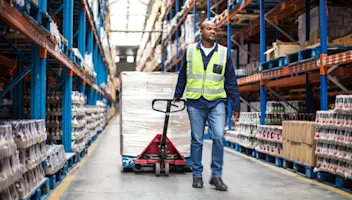Food Safety Modernization Act – Where Are We Now?
Food Safety Modernization Act – Where Are We Now?
Food Safety Modernization Act – Where Are We Now?
2 Apr 2020
Aptean Staff Writer
It’s been nine years since the Obama administration signed the Food Safety Modernization Act (FSMA) into law in an effort to better protect consumers by regulating the way food is grown, harvested and processed. Since then, the FDA has worked to transform the nation’s food safety system by shifting the focus from simply responding to foodborne illness to preventing it.
Now that almost all compliance dates for the seven major rules of FSMA have passed (small businesses have until July 2020 to comply with final Intentional Adulteration rules), the FDA has its sights set on the future of food safety and the tools and processes needed to build on the progress that has been made over the past nine years.
Below, we outline what FSMA looks like in 2020 and how the FDA is working towards an era of smarter food safety.
FSMA in Practice
According to the 2019 Food & Health Survey conducted by the International Food Information Council Foundation, almost 68% of respondents have confidence in the US food supply. Though the US recorded more than two dozen food safety outbreaks in 2018 - the highest amount in more than a decade – the implication doesn’t necessarily mean food supply is less safe. Instead, the ability to detect contaminated food has improved dramatically.
In a statement from acting FDA Commissioner Ned Sharpless, M.D., and Deputy Commissioner Frank Yiannis last April, the two explain, “We’ve already made great strides modernizing and further safeguarding the U.S. food supply chain with implementation of FSMA. Since FSMA was signed into law in 2011, the FDA has proposed and finalized critical regulations that have established science- and risk-based standards for the production and transportation of domestic and imported foods.”
Sharpless and Yiannis also point to the success the FDA has had in leveraging technology and analytical tools to further advance food safety. The GenomeTrakr Network, for example, is a first-of-its-kind network of laboratories that can sequence the genomes of foodborne pathogens and then upload the genomic sequence and the geographic location of this pathogen into a publicly accessible database.
But though most FSMA compliance dates have come and gone, the law is still far from being considered final. Aside from a number of requirements still yet to be written and a few small-business compliance dates still outstanding, attention is now being directed toward inadvertent non-compliance and whether FSMA does enough to keep consumers safe from foodborne illness. In 2019, for example, the Center for Food Safety sued the FDA for its lack of visibility into an E. coli outbreak that killed five people. The FDA agreed to a settlement and was required to identify foods at “high-risk” for foodborne illness and establish special recordkeeping guidelines for those who handle such foods. Though FSMA does hold food processors to a higher standard of food safety, “We [still] have not implemented a system that allows us to trace back to the farm level,” says Jaydee Hanson, a senior policy analyst at the Center for Food Safety.
Looking Ahead – A New Era of Smarter Food Safety
So what’s next for FSMA?
As Sharpless and Yiannis explained in their statement last April, thanks to today’s technology-focused world, “a wide variety of foods are now available to Americans conveniently, year-round and at affordable prices. We expect to see more innovation in the agriculture, food production, and food distribution systems in the next 10 years than we’ve seen in the past 20. With this ever-changing landscape, we know we must continue preparing to take advantage of new opportunities and address potential risks.”
The FDA is now working to develop a blueprint for a new era of smarter food safety, which will build on the regulatory framework of FSMA but leverage new and emerging technologies to create a safer, more digital system that puts traceability and transparency at the forefront. Some of these emerging technologies include blockchain, sensor technology, the Internet of Things and artificial intelligence. A public meeting including a broad cross-section of stakeholders was held in October 2019 to help shape this blueprint.
Yiannis admits that a lot has changed since FSMA became law in 2011 and more is needed to keep consumers safe. While the world’s food sources continue to become more available, it’s no surprise that food safety is still labeled a “high-risk issue” by the U.S. Government Accountability Office and that foodborne illness is still considered the most important food safety issue facing consumers today.
The FDA is planning to publish its strategic Blueprint in early 2020.
If you’re worried about staying compliant with ever-changing food safety rules and regulations, a food-specific ERP can help. Learn how JustFood helps businesses identify hazards, implement preventative controls and successfully document these measures in order to stay compliant. To learn more, reach out to us now. We’d love to talk.
Food Insights


Get in touch today to speak with an expert in your industry
To grow your business, you need a food ERP built specifically for your industry challenges. We're ready to help—reach out today and we'll help you find the right solution.






